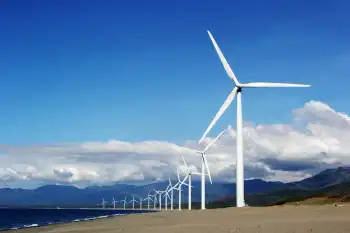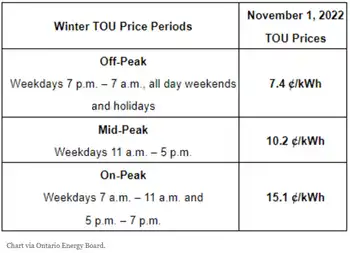High-priced hydro imports soaring
TORONTO, ONTARIO - The summer heat wave is forcing the province to import near-record amounts of electricity to prevent blackouts and it's costing us up to seven times the regular rate.
"If problems develop quickly and unexpectedly, then we may have to take action without warning," said Terry Young, a spokesman for the Independent Electricity System Operator (IESO).
"What we're trying to prevent is having to institute any rotating power cuts where we have to cut demand in certain areas of the province to deal with the situation," he said.
The province's power consumption peaked at 25,857 megawatts July 18, within a whisker of the record set the week previous at 26,170 megawatts. The IESO has issued a plea for the rest of the week for Ontario residents to scale back power use between 8 a.m. and 10 p.m.
But to keep up with demand, the province was forced to import up to 3,400 megawatts, or 13 per cent of power needs, from nearby states and provinces.
And it didn't come cheap.
During the late afternoon of July 18, the price of power had risen to nearly 39 cents a kilowatt hour. Normally the energy portion of the power bill is in the 5-cent to 10-cent range.
Yet household consumers won't see the full impact on their bills; they'll continue to be charged 5 cents a kilowatt for the first 750 kilowatt hours of power they use each month, and 5.8 cents for the remainder.
If that doesn't cover the full cost of power by the end of the year, the difference will be added to the debt rung up by the old Ontario Hydro — which is ultimately the responsibility of Ontario taxpayers. The unfunded debt now stands at $20.6 billion.
Two factors have allowed Ontario's neighbours to supply us with their power, Stephen Allen of the Northeast Power Co-ordinating Council said in an interview. The council's members are mostly utilities and power system operators.
First, New England and parts of New York have escaped the worst of the heat wave that has settled over Ontario.
Second, unlike Ontario, Allen notes that the northeastern states have gone on a generator-building binge. Since 1999, two-dozen natural gas-fired plants have been built in the New England states alone, he said — adding more than 8,000 megawatts of generating capacity. That's equivalent to about one-third of Ontario's total capacity.
As of July 18, Ontario's main import connections, with New York, Quebec and Michigan, had both power to sell and wires to deliver electricity to Ontario. "There's wiggle room here," Allen said.
Meeting new consumption records with imported power isn't quite what was contemplated as Ontario surveyed the power scene following the massive blackout in August 2003.
The new Liberal government that swept to power that October promised a change.
"We will help Ontario homes and businesses reduce their costs and cut their electricity consumption at least 5 per cent by 2007," the Liberal campaign platform pamphlet promised.
What the promise meant, the Liberals went on to explain, was that they'd reduce the consumption peak by 5 per cent from the level it was projected to reach by 2007.
That projected level was just shy of 27,000 megawatts; the Liberals promised to shave it by 1,350 megawatts to about 25,600.
That looked like a slam dunk in the cool summer of 2004, when peak demand got nowhere near that level. But this year, demand has gone up, not down.
The Liberals are undeterred about their 5 per cent reduction promise.
"We are still committed to that; we know it's an aggressive target," said Erika Botond, an aide to Energy Minister Dwight Duncan. Local hydro utilities have been authorized to spend $160 million on projects to reduce power demand in their areas, she noted.
Duncan has also named Peter Love as the province's first chief conservation officer to chart a long-term plan to cut consumption. But it's not expected to be ready until December, and it will focus on the period from two to 20 years in the future, Love said.
What about now?
Unlike New England, Ontario has built few new generators in the past decade and in fact has pledged to close all of its coal-fired generators. Nor have aggressive conservation programs been mounted.
That puts pressure on the electricity system officer to monitor supply and demand minute by minute.
If a generator breaks down, if a main power line is hit by lightning, or if demand simply starts to outstrip supply, system operators have the authority to order power cuts. They can order local utilities to shave demand in their area by a certain amount.
The utilities do it by reducing power to businesses who have volunteered to cut their power usage in a hurry when asked. If that's not enough, temporary local blackouts may be needed — although there was no sign yesterday that the system was close to that happening.
An alternative for the system operator is to reduce the voltage slightly right across the system — in effect spreading the same amount of power more thinly across the system. Most electrical equipment is designed to withstand a voltage cut of up to 5 per cent.
Earlier this year, the system operator cut voltage by 3 per cent for several hours when supply threatened to overtake demand.
Toronto is especially vulnerable to looming power problems.
The April shutdown of the Lakeview generating station in Mississauga left the city short of a local source of power — a gap that was plugged when Hydro One installed new transmission lines to bring power from more distant sources. But the problem hasn't been licked.
The IESO's latest outlook provides a sobering view for Toronto's prospects, as the wires bringing power into the city can't carry any more power.
"New generation and transmission facilities supplying the downtown Toronto area are urgently needed over the next five years," it warns in its most recent assessment.
Ontario Power Generation and TransCanada Corp. have proposed building a new gas-fired generating station in the port lands area, but so far the project has received no go-ahead to build, and it faces opposition from nearby residents.
The summer heat has done more than drive up demand for air conditioners.
Drought combined with the heat has lowered water levels in the rivers and lakes that power the province's hydro-electric stations, which supply close to 25 per cent of Ontario's power.
Hydro stations are supposed to churn out 34 million megawatt hours of electricity this year; at the moment, it looks as if they'll come up 1 million megawatt hours short of target.
Less subtle problems have reduced output from a couple of nuclear reactors. At the Pickering A station, the only operating reactor has been shut down.
Work on a sister reactor revealed unexpected problems with some of the reactor tubing. The 550-megawatt reactor had to be shut down for inspection. That has kept it on the sidelines up to now, although it's expected to return to action very soon.
In addition, a 750-megawatt reactor at the Bruce nuclear station is on a planned shutdown for regular maintenance, and one of the eight coal-fired units at the Nanticoke generating station has broken down.
Young said yesterday that near-record demand is expected to continue through the rest of the week. But he said demand appeared to stall July 18 after the IESO issued its appeal to Ontarians to cut back.
Related News

Power customers in British Columbia, Quebec have faced fees for refusing the installation of smart meters
SAINT JOHN - NB Power customers who do not want a smart meter installed on their home could be facing a stiff fee for that decision, but so far the utility is not saying how much it might be.
"It will be based on the principles of cost causation, but we have not gotten into the detail of what that fee would be at this point," said NB Power Senior Vice President of Operations Lori Clark at Energy and Utilities Board hearings on Friday.
In other jurisdictions that have already adopted smart meters, customers not wanting to participate have faced hundreds…




